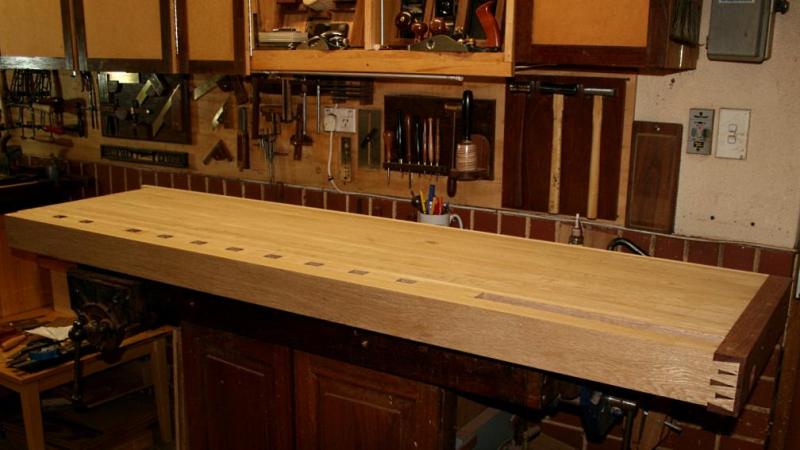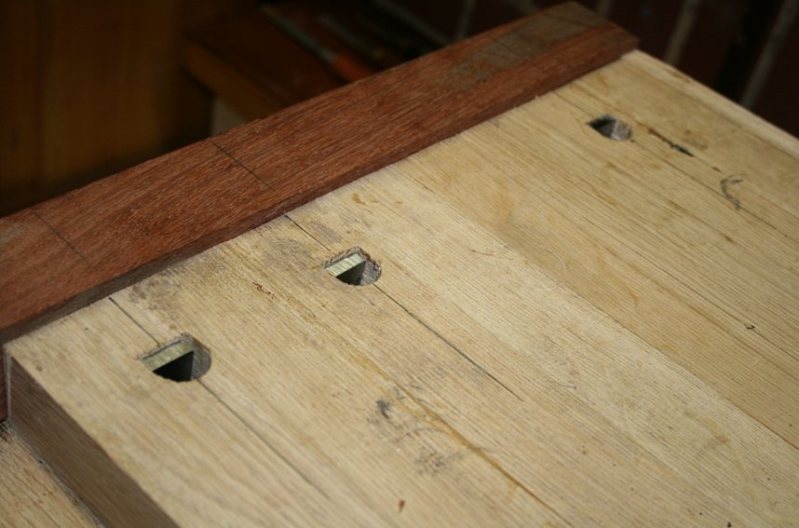Hi all
It has been a while since I have posted. I am finally getting ready to build my workbench (split top Roubo).
I have been thinking about endcap options for my bench. I'm currently recovering from a back injury and have way too much time on my hands. considered this theoretical for now. In Benchcrafted plans (and other resources) the only variations I see involve glue and lag bolts. I was wondering if I could make it work with sliding dovetails? I also want to preserve the houndstooth at the endcap.
What I cam up with was a series of dovetails and 90į tenons that fit into the endcap and then slide to the left to allow it to fit. the Dovetails would "fit" into regular mortices and then slide into there wedged mortices to provide the holding power. at the end the flywheel is bolted on - so there would be some mechanical hold to prevent the joint from back sliding.
Like I said, this is unnecessarily complicated - but other than that, would it work? Interested in seeing what the community thinks
Cheers!
Assaf
Screenshot 2021-10-20 104844.jpg




 Reply With Quote
Reply With Quote











